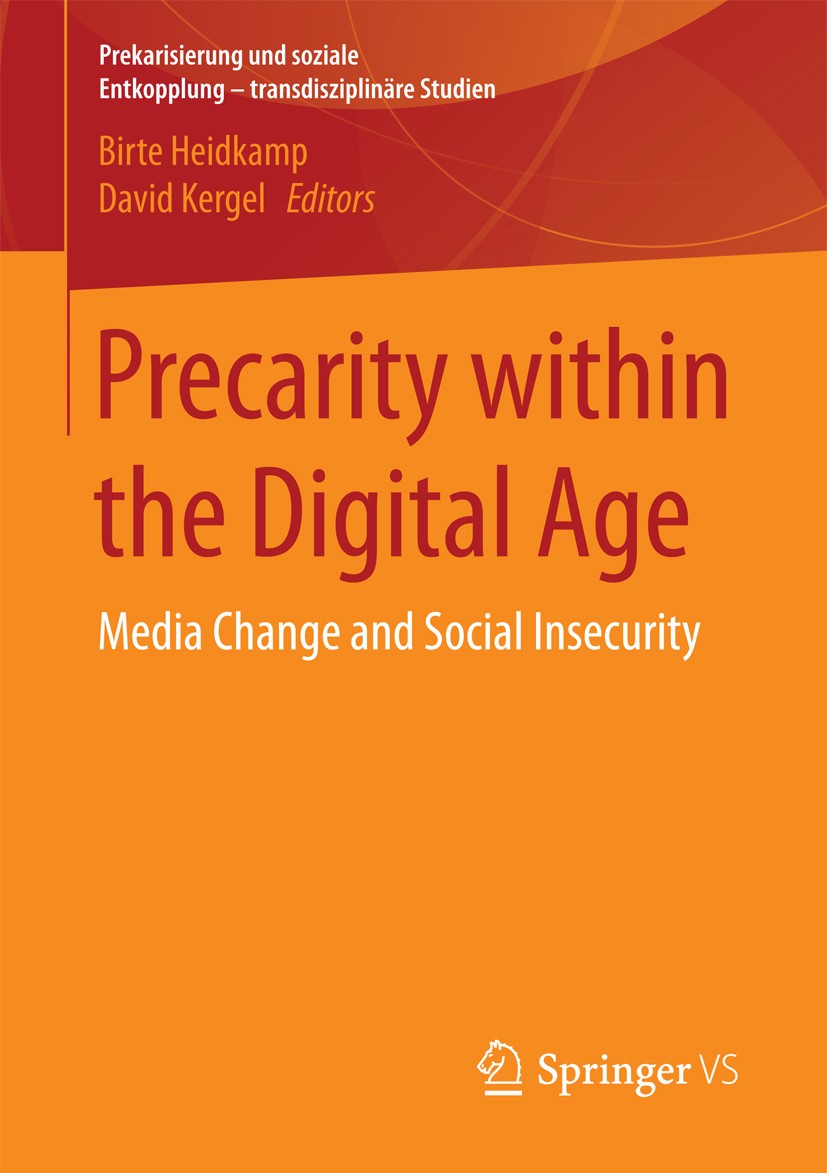| 书目名称 | Precarity within the Digital Age |
| 副标题 | Media Change and Soc |
| 编辑 | Birte Heidkamp,David Kergel |
| 视频video | http://file.papertrans.cn/755/754417/754417.mp4 |
| 概述 | Developments in the media and the social consequences.Precarity in and through the internet.International and interdisciplinary.Includes supplementary material: |
| 丛书名称 | Prekarisierung und soziale Entkopplung – transdisziplinäre Studien |
| 图书封面 |  |
| 描述 | The book deals with precarity within the digital age and focuses on media change and social insecurity. .Change arising from digital developments takes place on micro-, meso- and meta-levels and have always social implications. Concepts such as Social Media, eHealth and Digital Capitalism, Informational Capitalism and Social Exclusion, Digital Globalization and Motility frame the social dynamics and implications of changes in digital media. These changes evoke a double precarity or stable unstability: Social practices throughout the diverse societal fields are questioned through the media change which leads to a digital age. The ongoing media change requires new social practices – what evokes precarity as an ongoing insecurity how to face the `new digital world´..As a socio-economic phenomenon and effect of neoliberal policy precarity changes life planning and self-narrations of the affected individuals. Precarity and neoliberal subjection-processes manifest in the digital age and are performatively re-produced by the way new media are used. . |
| 出版日期 | Book 2017 |
| 关键词 | Innovation; Digitalization; E-Participation; Media-Change; Unequaliy; Social Insecurity; Work; Technical Un |
| 版次 | 1 |
| doi | https://doi.org/10.1007/978-3-658-17678-5 |
| isbn_softcover | 978-3-658-17677-8 |
| isbn_ebook | 978-3-658-17678-5Series ISSN 2509-3266 Series E-ISSN 2509-3274 |
| issn_series | 2509-3266 |
| copyright | Springer Fachmedien Wiesbaden GmbH 2017 |
 |Archiver|手机版|小黑屋|
派博传思国际
( 京公网安备110108008328)
GMT+8, 2025-11-22 11:46
|Archiver|手机版|小黑屋|
派博传思国际
( 京公网安备110108008328)
GMT+8, 2025-11-22 11:46


